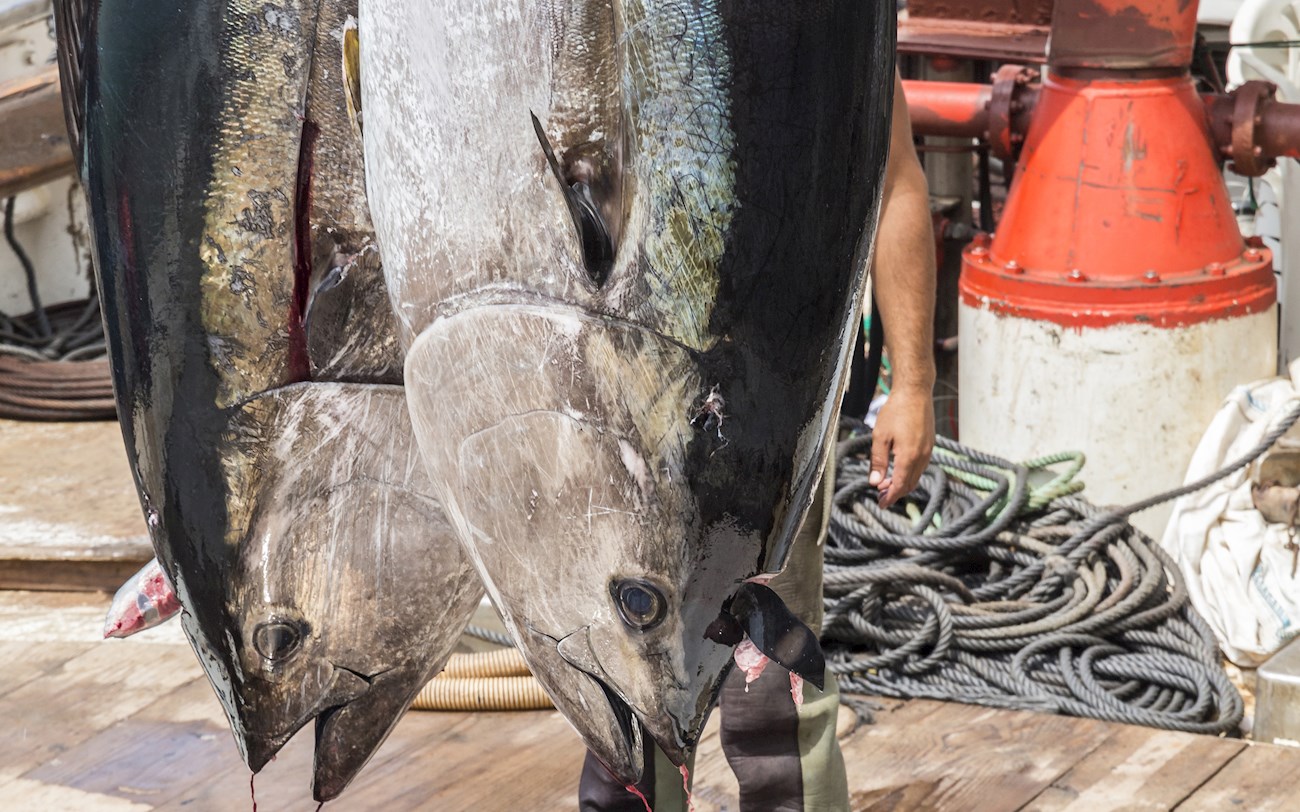Wild almadraba bluefin tuna (Atún de almadraba)
(Wild almadraba bluefin tuna, Almadraba tuna)
Called atún de almadraba in Spanish, wild almadraba bluefin tuna refers primarily to Atlantic bluefin tuna (atún rojo in Spanish) that is caught using an ancient artisan method of fishing known as almadraba.
The method uses an intricate maze of interconnecting trap nets that lead the tuna fish to their final destination - a circular central trap surrounded by boats, where only the largest adult tuna are caught and lifted from the nets, while the smaller and younger ones are set free into the ocean, making this technique of fishing sustainable.
Almadraba fishing method has been practiced in Andalusia for thousands of years with little to no changes, and it is thought to have been invented by the Phoenicians. Its Spanish name stems from Arabic and means a place of fighting or a place of hitting. Read more
Starting in May, the tuna are sourced off the coastline of Cadiz Province, in the towns of Barbate, Tarifa, Conil de la Frontera, and Zahara de Los Atunes, during their migration to warmer spawning-grounds in the Mediterranean waters. The tuna is of the highest quality during this period as the blubber it has built up over the winter months results in meat that is juicy and succulent, with melting texture and an exceptionally sweet flavor.
In Spain, the season of almadraba Bluefin tuna is a time of grand celebration and many gastronomic festivities revolving around this culinary delicacy, which is omnipresent in tapa bars and restaurants at this time of the year.







